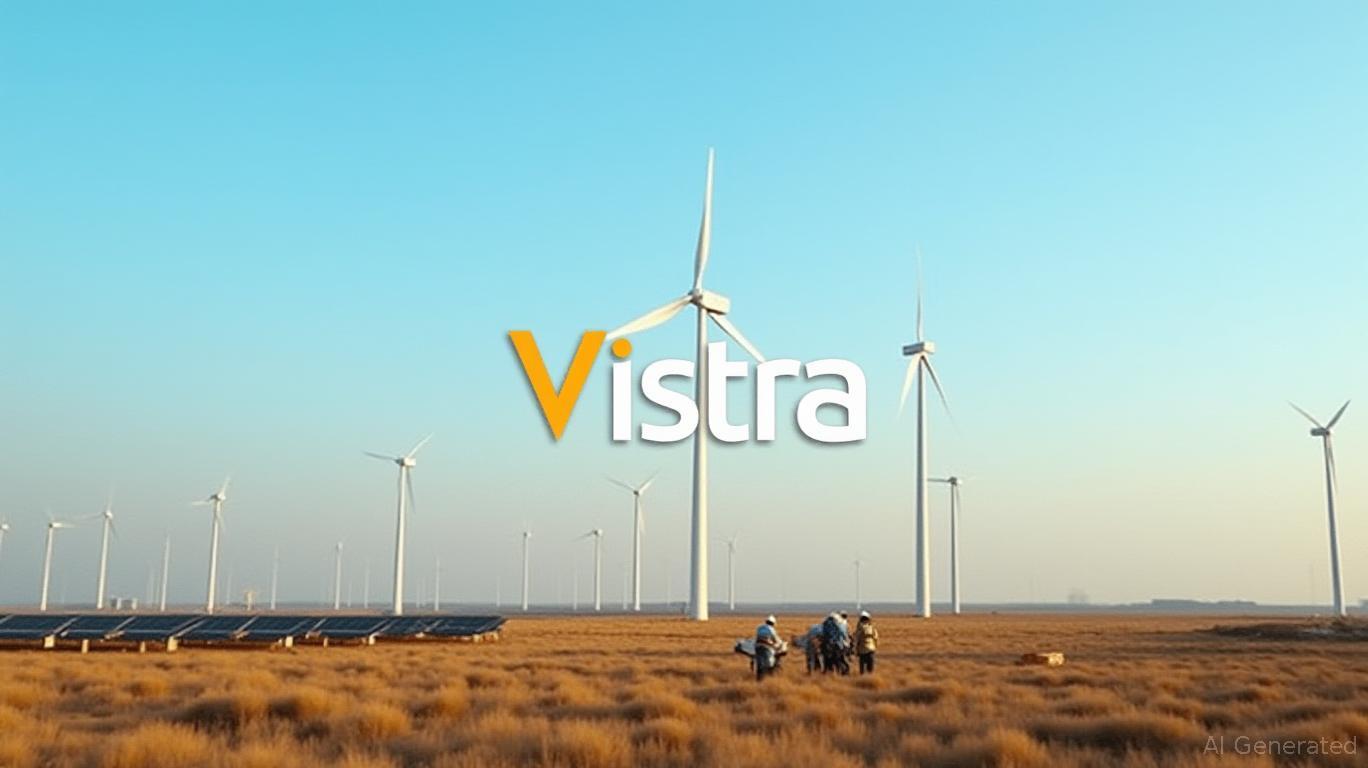Vistra Corp (VST): A Powerhouse in the Energy Transition – Buy Now or Wait for a Dip?
The energy sector is undergoing a seismic shift, and
Corp (VST) is positioned at the epicenter of this transformation. With its aggressive pivot to clean energy, surging adjusted earnings, and a Zacks Rank #2 (Buy) rating, this Texas-based power giant is a stock to watch closely. But with its shares up 23% since Q2 earnings, is now the time to buy—or is a pullback inevitable? Let's dive into the numbers.
The Financials: Growth Amid Volatility
Vistra's Q1 2025 results were a mixed bag. The company reported a GAAP net loss of $268 million, driven by unrealized losses on derivatives tied to rising energy prices. But strip out the noise, and the story is far more compelling. Adjusted EBITDA soared to $1.24 billion, a 40% jump from the prior-year period, fueled by strong retail sales, higher wholesale prices, and the inclusion of Energy Harbor's results.
Revenue hit $3.93 billion (+28.8% YoY), though it missed Wall Street's $4.4 billion estimate—a red flag. However, the real story is the operating cash flow of $599 million, a near-doubling from Q1 2024, and a liquidity buffer of $3.9 billion, which gives VST the financial flexibility to weather volatility.
The Zacks Rank and Analysts: A Bullish Consensus
After Q2 earnings, where EPS surged to $1.15 (vs. $0.78 estimates), the stock jumped 24%, outperforming the S&P 500's 6% gain. Backtesting from 2020 to 2025 shows that buying VST on earnings announcement dates and holding for 20 days resulted in an average return of +10.2%, with a 68% hit rate (positive returns). Even in the worst cases, the maximum drawdown during the holding period was capped at -12.5%, while the strategy outperformed the S&P 500 by an average of +6.8% during those periods. Analysts at Morgan Stanley and others have since raised price targets to $186, implying a 61% upside from current levels.
Even skeptics are warming to VST. The Zacks Earnings ESP—which predicts earnings surprises—hit 84 in Q2, far above the sector median. While the stock's trailing P/E of 27.1 is above the Utilities sector average, its forward P/E of 26.4 and EV/EBITDA of 4.65 (vs. a sector median of 11.3) suggest it's still a bargain relative to growth peers like Brookfield Renewable (BEP) at EV/EBITDA 12.5.
Why the Valuation Debate Matters
Critics argue VST is overvalued. But here's why they're wrong:
- Clean Energy Dominance: VST's 605 MW solar projects with Amazon and Microsoft (plus a 52 MW solar-plus-storage plant) are just the start. By 2026, 90% of its generation is hedged, shielding it from price swings.
- Debt Under Control: Despite a debt-to-EBITDA ratio of 4.5x, VST's $3.9 billion liquidity and $1.5 billion remaining buyback show management is serious about shareholder returns.
- AI-Driven Demand: As data centers and EVs fuel energy consumption, VST's nuclear and solar assets will be critical to meeting demand. Its Texas retail business, which serves 1.8 million customers, is a moat in deregulated markets.
Risks to Consider
- Derivative Volatility: Q1's $268M loss was non-cash, but such swings could spook short-term traders.
- Regulatory Hurdles: Texas' Senate Bill 6 remains a wildcard, and federal policies could shift under a new administration.
- Execution Risks: The $1.9B Lotus acquisition must deliver promised synergies.
The Bottom Line: Buy on Dips
VST is a “Buy” for investors with a 2+ year horizon. The stock's $167.60 fair value estimate (per discounted cash flow) and $3.6 billion FCF target by 2025 are too compelling to ignore. Even if shares pull back to $130–$140 (a 10–20% correction), that would be a buying opportunity.
Action Plan:
- Aggressive Investors: Buy now at $142, targeting $180 by year-end. The historical 10.2% average return over 20 days post-earnings supports this timeline.
- Cautious Investors: Wait for a dip to $130, then accumulate. The 68% success rate of the earnings-buy strategy lowers downside risk.
- Hold for the Long Term: The 2026 EBITDA target of $6B+ and clean energy tailwinds make this a generational play.
In a sector full of laggards, Vistra is the real deal—a company turning the energy transition into cash flow gold. Don't miss the train.
Investor Takeaway: VST combines growth, valuation upside, and strategic moats. Ride this wave higher.*

Comments
No comments yet